Under Construction May 2011
SEA OTTER
Enhydra lutris
GUARD HAIR
Length: 20-30mm (Brown 1942), 20-25mm (ASM #1 back), 7-15mm and 30mm at tip of tail (ASM #1 tail), 18-25mm (ASM #2 back), 9-20mm and 37mm at the tip of the tail (ASM #2 tail), 20-30mm (ASM #3), 25-33mm (ASM #4)
Diameter Range: 64-200 microns (Brown 1942), 65-105 microns (Furskin 2006), 100-120 microns (ASM #2), 85 microns (ASM #4), 100 microns (ASM #5).
Medullary Index: 0.20 ave Hard to measure due to intense pigmentation? (Brown 1942). 0.25 (ASM #2). 0.15 (ASM #3). 0.29 (ASM #4)
Medulla: Cells in the medulla not separated by pigment masses, like we see in canids. Might not have medulla in flank hairs? Very slender medulla (Brown 1942). Fragmentary and interrupted. Air-filled, medulla looks black in sample ASM #2-fiber from the head. In other sample ASM #2 medulla appears as long flat ovals that comprise the width of the medulla which is irregular in overall shape appearing very skinny (10 microns) at some points and wider (up to 25 microns) in other locales. ASM #3 shows a medulla that is absent in the tip that then turns into an irregularly shaped medulla that appears to be made of very small rounded cells. Further down the fiber, closer to the root end, the medulla is wide with flattened cells that are slightly cupped (see sea otter #3 image) and then the medulla is interrupted by the tip (distal end).
Color: Dark brown but lighter toward the base (Brown 1942).
Scales: toothy edges on the scales? (Furskin 2006). Petal-like; each individual scale has one point. Scales change along the length of the fiber from flower petal-like at the proximal end to overlapping torn paper-like scales.
UNDERFUR
Length: Brown 10-15mm (Brown 1942), 18-23 (ASM #1 back), 5-7mm (ASM #1 tail), 15-22mm (ASM #2 back), 5-7mm (ASM #2 tail), 15-20mm (ASM #3), 18-25mm (ASM #4)
Diameter Range: 20-56 microns (Brown 1942), 8-25 microns (Furskin 2006), 10 microns (ASM #3), 12.5 microns (ASM #4).
Medullary Index: 0.20 ave (Brown 1942). No medulla on present in underfur of ASM samples.
Medulla: rarely present (Brown 1942) Furskin says none (Furskin 2006). No medulla present (ASM #4)
Color: present in cortex and absent in medulla .Much lighter at the base than the tip. (Brown 1942). Streaky brown coloration (ASM #4)
Scales: Individual petal-like scales. Each individual scale has one point. Scales were measured at 25 microns from tip to tip.
Macro Qualities: 3.5 – 5.5 feet long. Brown-black color with white –tipped guard hairs on the head and back (Forsyth 1999). Up to 4.5 feet long. Very dense underfur with sparse guard hairs. Underfur often brown to almost black. Guard hairs can be black, pale brown or silver. Older animals can have a silvery head (ASF&G 2008). Deep blue-black-brown sprinkled with white hairs. Luster is high and the fur feels like deep velvet. Good “serviceability” (Bachrach 1953). Skin is 120-150 cm long and the tips of the guard hairs on the back are silver. Tail is 30-35cm long (Furskin 2006). Should be about 5 feet long including about a foot of tail. Blue black fur besprinkled with guard hairs of silvery white, neck is grayish or yellowish white. While most land animals are prime a month or two before mid winter, the otter is prime a month or two before spring (Samet 1950).
Cultures:
Notes: ASM #1 is from a pelt in the ASM education collection, no number, ASM #2 is from a pelt in the education collection LC_163-1, ASM #3 is from a handmade moccasin piece from Klukwan in the conservation lab, ASM #4 is from the ASM education collection number 2643, ASM #5 is from a slide made by Alaska State Archaeologist Dave McMahan
Troubleshooting: Broad distal shield, basal petal-shaped hair pattern on both guard and overhairs is also seen in other mustelids, but otter hair is longer and wider (Teerink 1991). Mayer (1952) suggests that river otter lack pigment granules in fur hair, but we did see some pigment in the ASM sample, though much less than in the sea otter. “Distal spatulate tip less than twice the width of the stalk on which it is borne.” For the river otter, he says the tip is three times the width of the stalk. Have narrow medulla like the fur seals and sea lions, but otters have a wider medulla near the tip.?? (Mayer 1952) Sea otters have more pigment in the cortex than river otters? (Brown 1942) This shield can be helpful in distinguishing between the otters. A sea otter has a shield less than twice as wide as the stalk, but the river otter shield is typically 3X as wide as its stalk. Sea otter has a very narrow medulla compared to any other weasel, under 0.3 and sometimes even narrower, and often interrupted. River otter medullary index is usually around 0.48. If only underfur is available, the otters and fur seal are difficult to distinguish. All have pointed petal scales, no medulla, and similar width, although fur seal underfur has more of the wider hairs in the 15 micron range. Underfur length may be helpful, as fur seal rarely exceeds about 18mm while sea otter may reach 25mm and river otter rarely exceeds 10mm. River otter has less pigment in the underfur than sea otter or fur seal.
Range: Only in coastal areas from the Pacific side of the Aleutian Islands on down. (Forsyth 1999). Traditional range was across all of southern Alaska and the Aleutian Islands (ADF&G 2008).
Names: Family Mustelidae (the mustelids) The Tlingit word is Yaxwch’ with an accent over the a “old man of the sea” (ASF&G 2008). Kamchatka beaver is the Kamchatka sea otter. “Loutre” is French, “oltor” is Dutch.
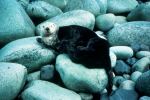
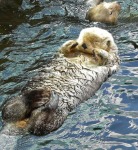



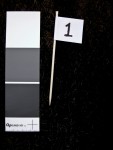



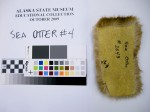



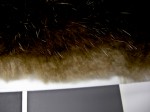
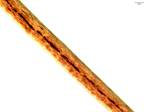

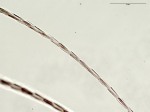

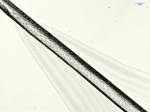
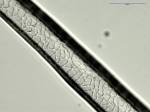
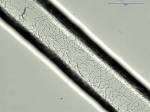
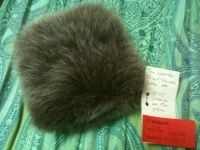
2 Comments
Dear manager.
I’m going to produce life size animatronics Harp seal pup and sea otter for exhibition.
Do you sell Sea otter fur-skin?
If you do, how much is it?
Do you have also Harp seal pup fur-skin?
Please, send me the quotation.
Regards,
Kyung Kim
WIZARD co,.Ltd.
http://www.wizard-fx@hotmail.com
Hello!
You will find it difficult to get these pelts legally in the United States due to the Marine Mammal Protection Act of 1972. whales, seals and sea lions are carefully permitted by NOAA (National Oceanic and Atmospheric Administration) while the US Fish and Wildlife Service protects walrus, polar bears and sea otters. Unless you get a permit, which is usually something that museums or researchers do, the only other people allowed to hunt or manufacture things from those animals are Alaska Native people. If an Alaska Native person made a hat, for example, from sea otter, then you could own it. But not the pelt. Also, if you wanted to cross international borders with it, you might have more trouble. Land otters (also called river otters) are legal and a pelt can be purchased from a store like the Alaska Fur Exchange in Anchorage. They have a website. Finally, the harp seal is not common in Alaska, so perhaps you might find a pelt in a different country. Good luck!